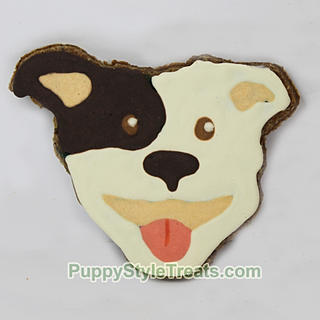COLD WEATHER TIPS FOR KEEPING YOUR DOG SAFE AND COMFORTABLE
- Puppy Style Treats and More
- Dec 21, 2024
- 3 min read

Winter can be a magical time of year, but the cold weather also presents unique challenges for dog owners. Just like humans, dogs are affected by freezing temperatures, snow, and icy conditions. To keep your furry friend safe, warm, and healthy during the colder months, here are some essential tips to consider:
1. Know Your Dog’s Tolerance to Cold
Not all dogs handle cold weather the same way. Breeds with thick, double-layered coats—such as Huskies and Malamutes—are naturally more equipped for the cold, while short-haired or smaller breeds, like Chihuahuas and Greyhounds, may struggle. Age, size, and health also play a role in determining your dog’s tolerance. Always monitor your pet for signs of discomfort or cold stress, such as shivering, lethargy, or whining.
2. Invest in Proper Winter Gear
For dogs with short fur or those more sensitive to the cold, a well-fitting dog coat or sweater can provide much-needed insulation. Additionally, consider booties to protect your dog’s paws from ice, snow, and de-icing chemicals. If your dog isn’t used to wearing booties, introduce them gradually and offer treats to create a positive association.
3. Protect Your Dog’s Paws
Cold weather can take a toll on your dog’s paws. Salt and chemicals used to melt ice can irritate their paw pads, while sharp ice can cause cuts. Always rinse and dry your dog’s paws after walks to remove any residue. You can also apply paw balm before heading out to provide an extra layer of protection. Check out our Spaw Wax HERE.
4. Adjust Outdoor Time
Limit your dog’s time outside during extremely cold weather. Even breeds accustomed to colder climates can suffer from frostbite and hypothermia if exposed for too long. For bathroom breaks or walks, aim for shorter outings and keep them moving to generate body heat
5. Provide Warm Shelter
If your dog spends time outdoors, ensure they have access to a warm, insulated shelter. The shelter should be elevated off the ground and equipped with dry bedding such as STRAW to retain heat. Hay absorbs liquids and will become cold.; same with blankets. Placing extra bales of straw around and above the dog house provides extra insulation. Always ensure your dog has access to fresh, unfrozen water.
6. Maintain Activity Indoors
Cold weather may limit outdoor play, but you can keep your dog active indoors with games, toys, and training sessions. Puzzle toys and interactive games can help keep their minds sharp and bodies active when it’s too cold to play outside.
7. Watch Out for Signs of Hypothermia and Frostbite
Be aware of the symptoms of hypothermia, such as shivering, weakness, or pale gums, and frostbite, which can cause discoloration of the skin, especially on the ears, tail, and paws. If you suspect either condition, seek veterinary care immediately.
8. Feed and Hydrate Appropriately
Dogs may require more calories during cold weather to maintain body heat, especially if they are active outdoors. However, consult your vet before making dietary changes. Ensure your dog has access to clean, fresh water at all times, as dehydration can occur even in winter.
9. Avoid Toxic Winter Hazards
Antifreeze is highly toxic to dogs, and its sweet taste can be appealing to them. Be vigilant about spills and keep all chemicals out of reach. Additionally, watch out for holiday hazards like chocolate, ornaments, and tinsel if celebrating indoors.
10. Don’t Leave Your Dog in the Car
Just as cars can become dangerously hot in summer, they can act like refrigerators in winter, rapidly dropping to freezing temperatures. Never leave your dog alone in a car during cold weather.
By taking these precautions, you can ensure your dog stays safe and comfortable throughout the winter season. A little extra care goes a long way in making the colder months enjoyable for both you and your canine companion. Stay warm and have fun exploring the winter wonderland together!






















Comments